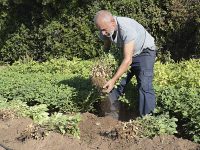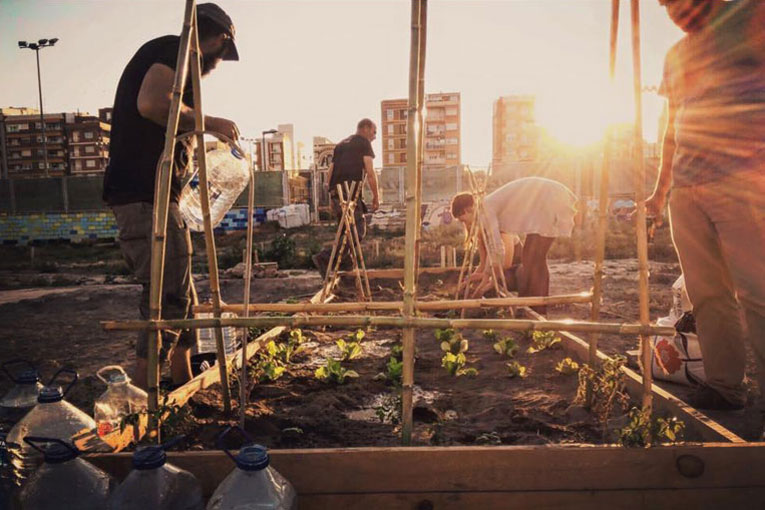

«When I lived in Valencia I used to go to the beach with the electric train from the station in Pont de Fusta (the Wooden Bridge). I had to go across the gardens [“Horta” in Catalan], which at that time was already beginning to be threatened by the cement. Since then, L’Horta of Valencia, ruined and tough, remains pure in the memory and corrupted by speculation, and I carry it as a mental paradigm, the last frontline». Ruined and tough. The last frontline. The writer and journalist Manuel Vicent describes L’Horta of Valencia with such forcefulness. We can find it in the pages of Veus per l’Horta (Voices for L’Horta) a book published in 2014 that portrays the situation of the market gardens and orchards territory in Valencia and proposes possible solutions to the degradation it has been suffering for decades.
For the time being, the struggle continues and the ones that constitute the resistance are small local associations that arise from the public awareness of building a new city model, far from urban speculation. The original Horta of Valencia used to be around 20,000 hectares wide back in the sixties. Currently, just a bit more than a quarter remains. The landscape, so characteristic of the Valencian Country, has also been damaged due to the destruction of other key elements such as irrigation ditches, roads and architectural elements. So do a range of experts from the University of Valencia, the Polytechnic University of Valencia and the CSIC (Spanish public Council for Scientific Research) defend in the aforementioned book Veus per l’Horta.
Resisting and building alternatives, that is what organizations like Per l’Horta are doing. It is a social movement, the heir of the first Popular Legislative Initiative to protect L’Horta of Valencia, in operation for more than ten years. The members of Per l’Horta do not only want to make proposals, they want to be an action group as well.
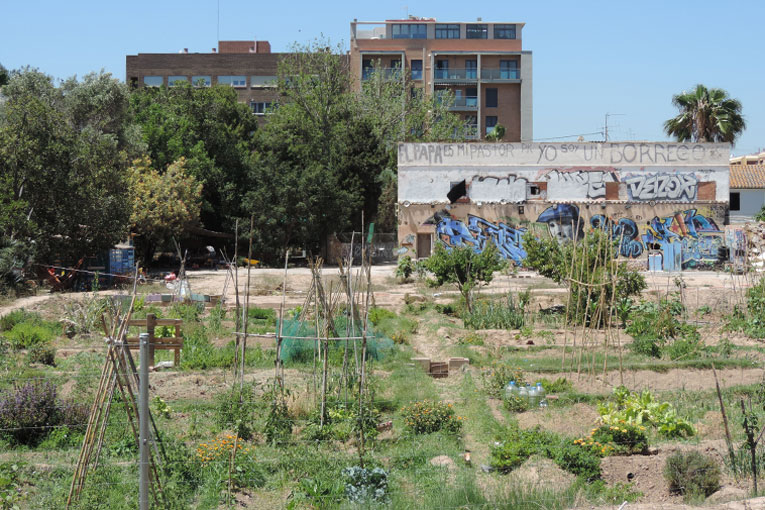
Resident involvement as antidote against landscape destruction
Per l’Horta seeks its goals through citizen involvement. The Citizen Observatory of L’Horta was created with this in mind. It is a tool to investigate what the real situation of L’Horta is through the citizenry, the associations and the social structures that can be found in the municipalities of L’Horta. This method is going to last for a while with the idea of studying how it evolves. There will be sponsors and supervisors. The sponsors will be volunteers who will study the territory, keeping in mind different items in some checklists, specifically design for this task. Later they will upload it to the cloud and share it with the other members. After collecting the data, the supervisors from each area will check the sheets’ validity. Once done, they will be posted on the website of the Observatory for the use of the residents. The connection to this research tool is planned for summer.
The representatives of Per l’Horta declare that they seek «to create a social network for village people to be involved» and «to compile an inventory of L’Horta to works as denunciation and to write reports to confirm what exactly the public authorities are doing with L’Horta.»
Les Espigolaores (the female gleaners) is a radically different project, but equally necessary for L’Horta. This feminist group formed by women agree with the ultimate purpose, that is, the recovery of a rural reality, but their tools are totally different. Their proposal is a documentary entitled Les Espigolaores. They want to rescue the oral memory of women and their role on L’Horta of Campanar through this audiovisual resource. This work challenges us to rethink the imaginary of L’Horta and its complexity, the specific situations hidden behind this way of rural life, the stories of women who have lived or still live in the street Partida de Dalt and in the long-gone street Partida del Pouet. These life stories, which in turn make up the collective culture of the territory, were displayed on June 3rd at Fira Alternativa de València (The Alternative Fair of Valencia). For further information there is Artxiviu, a joint project of the Polytechnic University of Valencia, the Intermediate Creations Laboratory (UPV), Les Espigolaores and Fundació Assut, where very interesting data about living in L’Horta can be found.
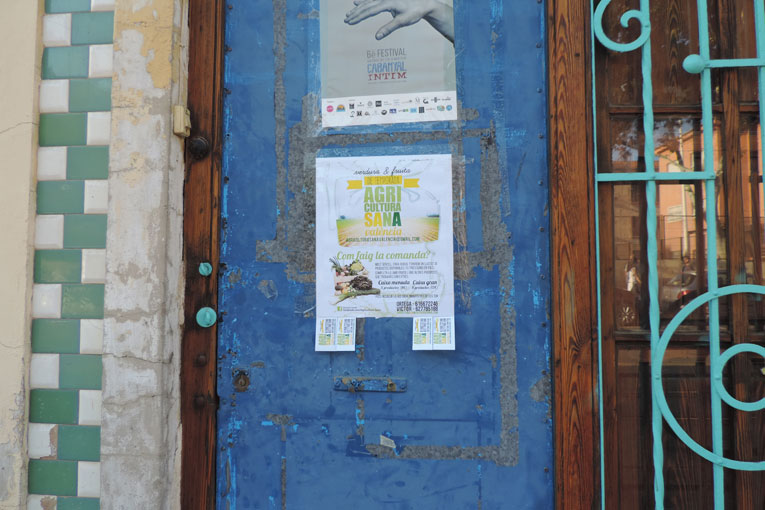
The district of El Cabanyal also has its own way of recovering L’Horta. The main attraction of this neighbourhood movement is El Clot (the hole), a public space that used to function as a garbage dump, but will now be used by the neighbours of El Cabanyal. In Cabanyal Horta, the association that promotes the revitalisation of this area, a project of Agroecology is being developed. Its representatives say that since December 2015 they are «restlessly – and voluntarily – working to restore El Clot, with its red streets and sifting every inch of earth to remove waste and make out places fit for confluence and community coexistence». Among their upcoming activities we can highlight the playground built by the neighbors with recycled materials, growing tables so people suffering from reduced mobility can cultivate and the creation of an area of benches and tables for meetings and workshops.
The Benimaclet Neighbour Association is also «interested in the recovery and promotion of the historical, cultural and social heritage of their neighbourhood. On June 2nd, the agreement of collaboration between this association, the Valencian regional government and the Polytechnic University of Valencia became public. This collaboration seeks to carry out academic projects and research of the historical and artistic heritage in houses and farm houses of the district.
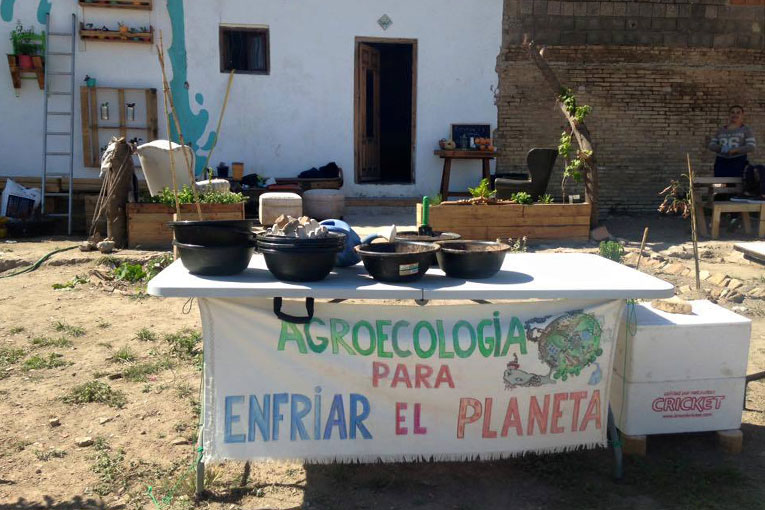
These are just a few examples of the initiatives for the territory of L’Horta currently in the works in the regions of Valencia. Attention to them is increasing day after day. Their proposals and projects are needed to reset and change the city, moving away from urban speculation and the destruction of L’Horta. This also adds value to the rural thing and enables us to make the most out of what we have by chance or nature. The expectations for the future with the new Plan of Territorial Action for L’Horta seem more promising than with the previous government. According to the current Valencian regional government this plan «proposes a sustainable urban model and wants to end the decay of L’Horta, continuing the protection and regeneration of this area with so much ecological, cultural, productive and scenic value.» However, in Per l’Horta they are «cautious in our optimism,» because «the brutality of speculation is widespread» and «old habits die hard».
Cabanyal Horta also tries to stop this «brutality» and wants to bring to light an alternative way to restore public space and turn it into a collective work, involving the community, without significant costs for the administration. In addition to restoring this territory, they defend recycling the materials «to give a second or third life to things», as the association claims. They assure that this is the right way to «face the current consumption model, the culture of disposability».
As the writer and journalist Emili Piera said in Veus per l’Horta, «there is still a lot of market gardens and orchards in L’Horta and, following common sense – the most useful one – it is said that while there is life, there is hope. Of course, we have the right to hope. And we must be diligent and accurate, so pointless efforts will not spread melancholy once again».
Marta Navarro. Student of Journalism at the University of Valencia.
© Mètode 2016.


